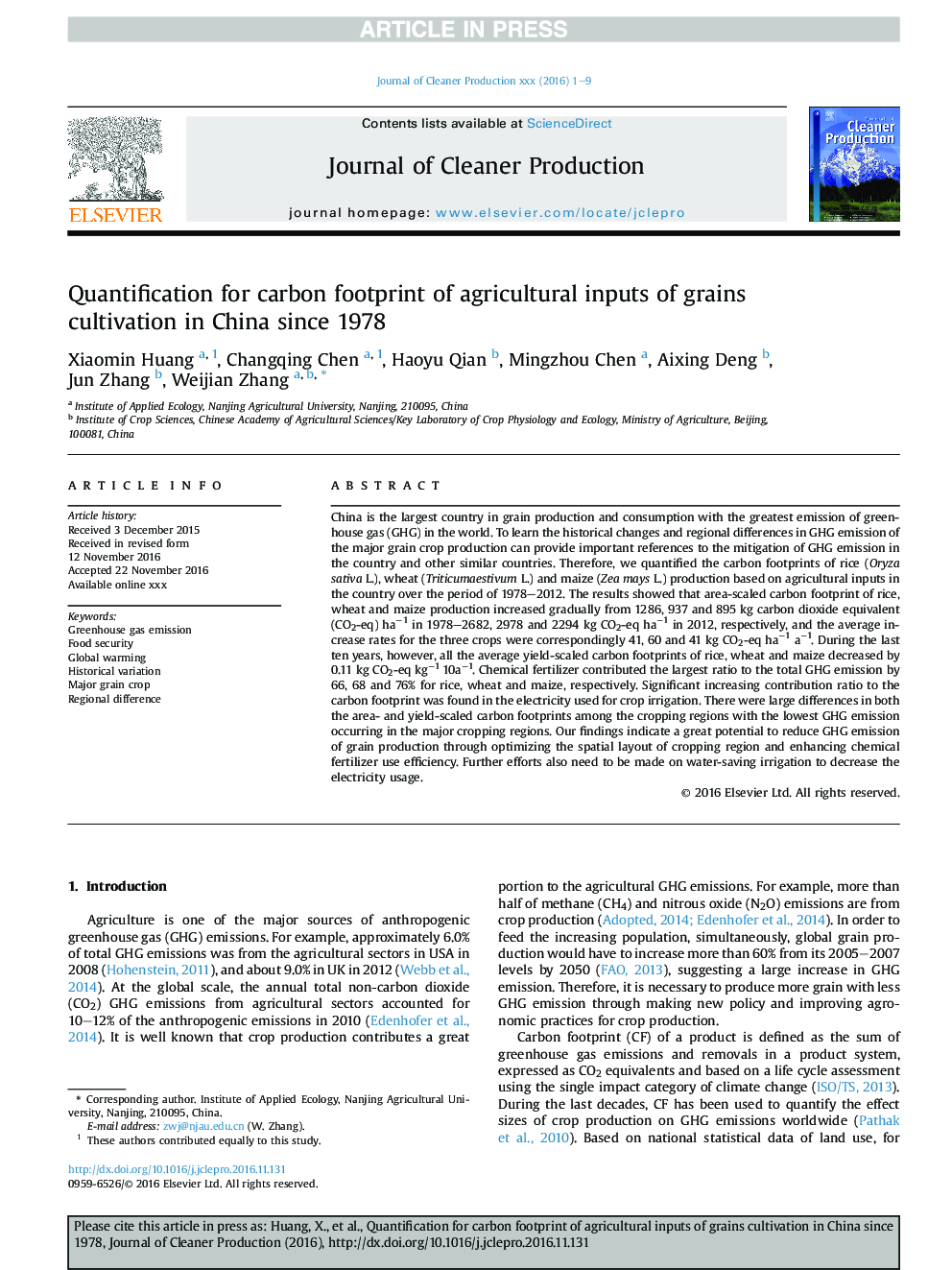| کد مقاله | کد نشریه | سال انتشار | مقاله انگلیسی | نسخه تمام متن |
|---|---|---|---|---|
| 5480338 | 1399315 | 2017 | 9 صفحه PDF | دانلود رایگان |
عنوان انگلیسی مقاله ISI
Quantification for carbon footprint of agricultural inputs of grains cultivation in China since 1978
ترجمه فارسی عنوان
کوانتومی برای ردگیری کربن ورودی های کشاورزی کشت غلات در چین از سال 1978
دانلود مقاله + سفارش ترجمه
دانلود مقاله ISI انگلیسی
رایگان برای ایرانیان
کلمات کلیدی
انتشار گازهای گلخانه ای، امنیت غذایی، گرمایش جهانی، تنوع تاریخی، محصول بزرگ غلات، تفاوت منطقه ای،
موضوعات مرتبط
مهندسی و علوم پایه
مهندسی انرژی
انرژی های تجدید پذیر، توسعه پایدار و محیط زیست
چکیده انگلیسی
China is the largest country in grain production and consumption with the greatest emission of greenhouse gas (GHG) in the world. To learn the historical changes and regional differences in GHG emission of the major grain crop production can provide important references to the mitigation of GHG emission in the country and other similar countries. Therefore, we quantified the carbon footprints of rice (Oryza sativa L.), wheat (Triticumaestivum L.) and maize (Zea mays L.) production based on agricultural inputs in the country over the period of 1978-2012. The results showed that area-scaled carbon footprint of rice, wheat and maize production increased gradually from 1286, 937 and 895 kg carbon dioxide equivalent (CO2-eq) haâ1 in 1978-2682, 2978 and 2294 kg CO2-eq haâ1 in 2012, respectively, and the average increase rates for the three crops were correspondingly 41, 60 and 41 kg CO2-eq haâ1 aâ1. During the last ten years, however, all the average yield-scaled carbon footprints of rice, wheat and maize decreased by 0.11 kg CO2-eq kgâ1 10aâ1. Chemical fertilizer contributed the largest ratio to the total GHG emission by 66, 68 and 76% for rice, wheat and maize, respectively. Significant increasing contribution ratio to the carbon footprint was found in the electricity used for crop irrigation. There were large differences in both the area- and yield-scaled carbon footprints among the cropping regions with the lowest GHG emission occurring in the major cropping regions. Our findings indicate a great potential to reduce GHG emission of grain production through optimizing the spatial layout of cropping region and enhancing chemical fertilizer use efficiency. Further efforts also need to be made on water-saving irrigation to decrease the electricity usage.
ناشر
Database: Elsevier - ScienceDirect (ساینس دایرکت)
Journal: Journal of Cleaner Production - Volume 142, Part 4, 20 January 2017, Pages 1629-1637
Journal: Journal of Cleaner Production - Volume 142, Part 4, 20 January 2017, Pages 1629-1637
نویسندگان
Xiaomin Huang, Changqing Chen, Haoyu Qian, Mingzhou Chen, Aixing Deng, Jun Zhang, Weijian Zhang,
